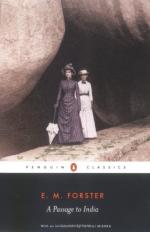|
This section contains 2,592 words (approx. 9 pages at 300 words per page) |

|
SOURCE: "Short Stories: The Life to Come," in E. M. Forster's Posthumous Fiction, University of Victoria, 1977, pp. 21-66.
Here, Page analyzes how the posthumous stories develop more fully the central themes and techniques first explored in the early short stories.
By considering briefly the stories published in Forster's lifetime, it will be possible to gauge the extent to which the posthumous stories represent an extension or modification of themes and techniques. First, however, the chronological caveat made earlier must be repeated. It is not unusual, even in published discussions of Forster's work, to find confusion concerning the dating of his work. We read in a recent book, for example, that 'E. M. Forster began by writing fantasies, short stories of youths who turned into trees and omnibuses which left with regularity for the celestial regions where Shelley dwelt. When he came to exchange fantasy for plot, he wrote...
|
This section contains 2,592 words (approx. 9 pages at 300 words per page) |

|


